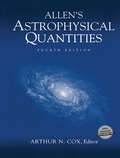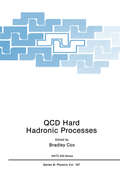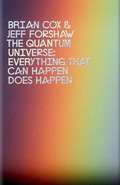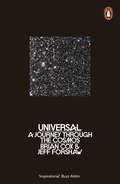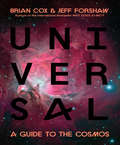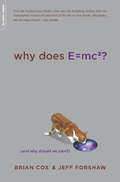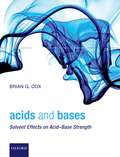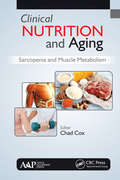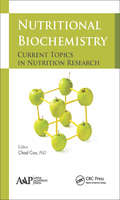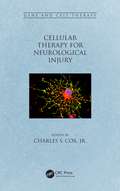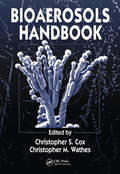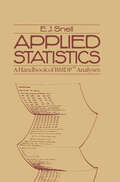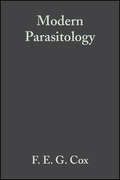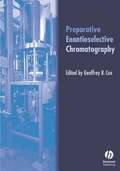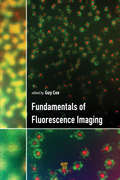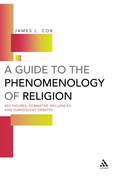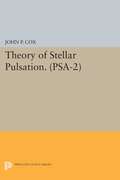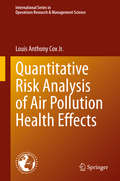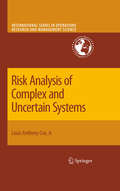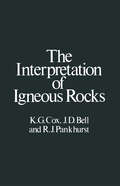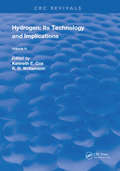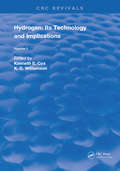- Table View
- List View
Allen’s Astrophysical Quantities
by Arthur N. CoxThis new, fourth, edition of Allen's classic Astrophysical Quantities belongs on every astronomer's bookshelf. It has been thoroughly revised and brought up to date by a team of more than ninety internationally renowned astronomers and astrophysicists. While it follows the basic format of the original, this indispensable reference has grown to more than twice the size of the earlier editions to accommodate the great strides made in astronomy and astrophysics. It includes detailed tables of the most recent data on: - General constants and units - Atoms, molecules, and spectra - Observational astronomy at all wavelengths from radio to gamma-rays, and neutrinos - Planetary astronomy: Earth, planets and satellites, and solar system small bodies - The Sun, normal stars, and stars with special characteristics - Stellar populations - Cataclysmic and symbiotic variables, supernovae - Theoretical stellar evolution - Circumstellar and interstellar material - Star clusters, galaxies, quasars, and active galactic nuclei - Clusters and groups of galaxies - Cosmology. As well as much explanatory material and extensive and up-to-date bibliographies.
QCD Hard Hadronic Processes (Nato Science Series B: #197)
by Bradley CoxThe Advanced Research Workshop on QeD Hard Hadronic Processes was held on 8-13 October 1987 at Hotel on the Cay, St. Croix, U. S. Virgin Islands. The underlying theme of the workshop, the first in a series, was an examination, both theoretical and experimental, of the state of understanding of Quantum Chromodynamics. Because of the pervasiveness of the strong interactions in all aspects of high energy physics, QCD is central to many problems in elementary particle physics. Therefore, this workshop was organized to provide a forum in which the theory Quantum Chromodynamics cou 1 d be confronted with experi ment. The workshop was organ i zed in four sessions, each of which concentrated on a major experimental arena in which a hard QCD process can be measured experimentally. A fifth session was rlevoted to global issues which effect all QCD processes. Each session began with a survey of the theoretical developments in the particular area and concluded with a round table which discussed the various information presented in the course of the discussions. A session of the workshop was devoted to the direct production of high transverse momentum photons in hadronic interactions. Data from several experiments, either completed or in progress at CERN (NA3, NA24, WA70, UA6, CCOR, R806, AFS, RllO, UA1 and UA2), were di scussed and the prospects for two new upcomi ng experi ments from Fermil ab (E-705, E-706) were presented.
The Quantum Universe: Everything that can happen does happen
by Brian Cox Jeff ForshawThe Quantum Universe brings together two authors on a brilliantly ambitious mission to show that everyone can understand the deepest questions of science. But just what is quantum physics? How does it help us understand the world? Where does it leave Newton and Einstein? And why, above all, can we be sure that the theory is good? The bizarre behaviour of the atoms and energy that make up the universe has led to some very woolly pronouncements on the nature of all interconnectedness. Here, Brian Cox and Jeff Forshaw give us the real science, and reveal the profound theories that allow for concrete, yet astonishing, predictions about the world. This is our most up-to-date picture of reality.
Universal: A Journey Through the Cosmos
by Brian Cox Jeff ForshawAn awe-inspiring, unforgettable journey of scientific exploration from Brian Cox and Jeff Forshaw, the top ten bestselling authors of The Quantum Universe.We dare to imagine a time before the Big Bang, when the entire Universe was compressed into a space smaller than an atom. And now, as Brian Cox and Jeff Forshaw show, we can do more than imagine: we can understand. Over the centuries, the human urge to discover has unlocked an incredible amount of knowledge. What it reveals to us is breathtaking. Universal takes us on an epic journey of scientific exploration and, in doing so, reveals how we can all understand some of the most fundamental questions about our Earth, Sun, Solar System and the star-filled galaxies beyond. Some of these questions - How big is our solar system? How fast is space expanding? - can be answered from your back garden; the answers to others - How big is the Universe? What is it made of? - draw on the astonishing information now being gathered by teams of astronomers operating at the frontiers of the known universe.At the heart of all these questions - from the earliest attempts to quantify gravity, to our efforts to understand what dark matter is and what really happened at the birth of our universe - is the scientific process. Science reveals a deeper beauty, connects us to each other, to our world, and to our Universe; and, by understanding the groundbreaking work of others, reaches out into the unknown. What's more, as Universal shows us, if we dare to imagine, we can all do it.
Universal: A Guide to the Cosmos
by Brian Cox Jeff ForshawAn awe-inspiring, unforgettable journey of scientific exploration from Brian Cox and Jeff Forshaw, the international bestselling authors of Why Does E=MC2? and The Quantum Universe, with 55 black-&-white and 45 full-color pages featuring photographs, diagrams, maps, tables, and graphsWe dare to imagine a time before the Big Bang, when the entire universe was compressed into a space smaller than an atom. And now, as Brian Cox and Jeff Forshaw show, we can do more than imagine: we can understand.Universal takes us on an epic journey of scientific exploration. It reveals how we can all come to grips with some of the most fundamental questions about our Earth, Sun, and solar system--and the star-filled galaxies beyond. How big is our solar system? How quickly is space expanding? How big is the universe? What is it made of? Some of these questions can be answered on the basis of observations you can make in your own backyard. Other answers draw on the astonishing information now being gathered by teams of astronomers operating at the frontiers of the known universe.At the heart of all this lies the scientific method. Science reveals a deeper beauty and connects us to each other, to our world, and to our universe. Science reaches out into the unknown. As Universal demonstrates, if we dare to imagine, we can do the same.
Why Does E=mc2?: (And Why Should We Care?)
by Brian Cox Jeff ForshawThe international bestseller: an introduction to the theory of relativity by the eminent physicists Brian Cox and Jeff ForshawWhat does E=mc2 actually mean? Dr. Brian Cox and Professor Jeff Forshaw go on a journey to the frontier of twenty-first century science to unpack Einstein's famous equation. Explaining and simplifying notions of energy, mass, and light-while exploding commonly held misconceptions-they demonstrate how the structure of nature itself is contained within this equation. Along the way, we visit the site of one of the largest scientific experiments ever conducted: the now-famous Large Hadron Collider, a gigantic particle accelerator capable of re-creating conditions that existed fractions of a second after the Big Bang.A collaboration between one of the youngest professors in the United Kingdom and a distinguished popular physicist, Why Does E=mc2? is one of the most exciting and accessible explanations of the theory of relativity.
Why Does E=mc2?: (And Why Should We Care?)
by Brian Cox Jeff ForshawThe international bestseller: an introduction to the theory of relativity by the eminent physicists Brian Cox and Jeff Forshaw What does E=mc2 actually mean? Dr. Brian Cox and Professor Jeff Forshaw go on a journey to the frontier of twenty-first century science to unpack Einstein's famous equation. Explaining and simplifying notions of energy, mass, and light-while exploding commonly held misconceptions-they demonstrate how the structure of nature itself is contained within this equation. Along the way, we visit the site of one of the largest scientific experiments ever conducted: the now-famous Large Hadron Collider, a gigantic particle accelerator capable of re-creating conditions that existed fractions of a second after the Big Bang. A collaboration between one of the youngest professors in the United Kingdom and a distinguished popular physicist, Why Does E=mc2? is one of the most exciting and accessible explanations of the theory of relativity.
Acids and Bases: Solvent Effects on Acid-Base Strength
by Brian G. CoxAcids and bases are ubiquitous in chemistry. Our understanding of them, however, is dominated by their behaviour in water. Transfer to non-aqueous solvents leads to profound changes in acid-base strengths and to the rates and equilibria of many processes: for example, synthetic reactions involving acids, bases and nucleophiles; isolation of pharmaceutical actives through salt formation; formation of zwitter- ions in amino acids; and chromatographic separation of substrates. This book seeks to enhance our understanding of acids and bases by reviewing and analysing their behaviour in non-aqueous solvents. The behaviour is related where possible to that in water, but correlations and contrasts between solvents are also presented. Fundamental background material is provided in the initial chapters: quantitative aspects of acid-base equilibria, including definitions and relationships between solution pH and species distribution; the influence of molecular structure on acid strengths; and acidity in aqueous solution. Solvent properties are reviewed, along with the magnitude of the interaction energies of solvent molecules with (especially) ions; the ability of solvents to participate in hydrogen bonding and to accept or donate electron pairs is seen to be crucial. Experimental methods for determining dissociation constants are described in detail. In the remaining chapters, dissociation constants of a wide range of acids in three distinct classes of solvents are discussed: protic solvents, such as alcohols, which are strong hydrogen-bond donors; basic, polar aprotic solvents, such as dimethylformamide; and low-basicity and low polarity solvents, such as acetonitrile and tetrahydrofuran. Dissociation constants of individual acids vary over more than 20 orders of magnitude among the solvents, and there is a strong differentiation between the response of neutral and charged acids to solvent change. Ion-pairing and hydrogen-bonding equilibria, such as between phenol and phenoxide ions, play an increasingly important role as the solvent polarity decreases, and their influence on acid-base equilibria and salt formation is described.
Clinical Nutrition and Aging: Sarcopenia and Muscle Metabolism
by Chad CoxThis title includes a number of Open Access chapters. Sarcopenia—the loss of muscle mass and strength that occurs with advancing age—is a major health challenge, particularly in North America, Europe, and Japan, which have large aging populations. This compendium volume is a valuable addition to the existing literature, providing state-of-the-art information on the most effective prevention and treatment options. Included are research articles on nutrition management and the prevention of sarcopenia; protein therapy for sarcopenia; effect of exercise on sarcopenia; and other therapeutic strategies, including antioxidants and steroids.
Clinical Nutrition and Aging: Sarcopenia and Muscle Metabolism
by Chad CoxThis title includes a number of Open Access chapters. Sarcopenia—the loss of muscle mass and strength that occurs with advancing age—is a major health challenge, particularly in North America, Europe, and Japan, which have large aging populations. This compendium volume is a valuable addition to the existing literature, providing state-of-the-art information on the most effective prevention and treatment options. Included are research articles on nutrition management and the prevention of sarcopenia; protein therapy for sarcopenia; effect of exercise on sarcopenia; and other therapeutic strategies, including antioxidants and steroids.
Nutritional Biochemistry: Current Topics in Nutrition Research
by Chad CoxThis title includes a number of Open Access chapters. Nutrition is becoming ever more central to our understanding of metabolic processes. Nutritional biochemistry offers insight into the mechanisms by which diet influences human health and disease. This book focuses on five aspects of this complex field of study: nutritional genomics, clinical nut
Cellular Therapy for Neurological Injury
by Charles S. CoxCellular Therapy for Neurological Injury discusses the current status of cellular therapy for neurological disorders. The primary areas of focus include traumatic brain injury, stroke (ischemic and hemorrhagic), and spinal cord injury. The book explores cell therapy approaches to these and other conditions, while discussing current advances and a l
Bioaerosols Handbook
by Christopher S. Cox Christopher M. WathesThis comprehensive handbook provides up-to-date knowledge and practical advice from established authorities in aerosol science. It covers the principles and practices of bioaerosol sampling, descriptions and comparisons of bioaerosol samplers, calibration methods, and assay techniques, with an emphasis on practicalities, such as which sampler to use and where it should be placed. The text also offers critiques concerning handling the samples to provide representative and meaningful assays for their viability, infectivity, and allergenicity. A wide range of microbes-viz., viruses, bacteria, fungi and pollens, and their fragments-are considered from such perspectives.Bioaerosols Handbook is divided into four parts, providing a wide-ranging reference work, as well as a practical guide on how best to sample and assay bioaerosols using current technology.
Applied Statistics: A Handbook of BMDP™ Analyses
by David CoxThis handbook is a realization of a long term goal of BMDP Statistical Software. As the software supporting statistical analysis has grown in breadth and depth to the point where it can serve many of the needs of accomplished statisticians it can also serve as an essential support to those needing to expand their knowledge of statistical applications. Statisticians should not be handicapped by heavy computation or by the lack of needed options. When Applied Statistics, Principle and Examples by Cox and Snell appeared we at BMDP were impressed with the scope of the applications discussed and felt that many statisticians eager to expand their capabilities in handling such problems could profit from having the solutions carried further, to get them started and guided to a more advanced level in problem solving. Who would be better to undertake that task than the authors of Applied Statistics? A year or two later discussions with David Cox and Joyce Snell at Imperial College indicated that a wedding of the problem statements and suggested solutions with control language to accomplish these analyses would further the learning process for many statisticians. They were willing to undertake the project. Joyce Snell has done an excellent job of melding the two approaches and has carried many of the problems a step further by suggesting alternate approaches and follow-up analyses.
Modern Parasitology: A Textbook of Parasitology
by F. E. G. CoxThis is a thorough revision and update of the highly successful first edition, which which achieved sales in excess of 4,500. The text serves as a comprehensive introduction to parasitology for both undergraduate and beginning graduate students. In this edition, particular emphasis is placed on parasites of human and veterinary importance. The first three chapters in the text are concerned with how parasites 'work,' their biochemistry, molecular and cell biology and physiology. The remaining chapters cover ecology and epidemiology, immunology and chemotherapy, with the final chapter covering integrated control. This new edition contains new material on cell and molecular biology, vectors and control, which is in contrast to the general biological approach of the first edition. The second edition will succeed the first as the major text on parasitology for students in biology, zoology, microbiology, medicine, veterinary medicine, tropical medicine and public health.
Preparative Enantioselective Chromatography
by Geoffrey B. CoxThe development of chiral liquid chromatography, facilitating the straightforward separation of enantiomers, was a significant advance in chromatography, leading to widespread application in analytical chemistry. Application in preparative chromatography has been less rapid, but with the development of single enantiomer pharmaceuticals its use is increasingly common in chemical synthesis at laboratory, pilot plant and even full production scale. Brings non-experts up to speed quickly and comprehensively, facilitating the rapid development of effective separations of enantiomeric mixtures on a range of process scales Presents case studies drawn from within the pharmaceutical industry to clearly illustrate the utility and value of preparative scale enantioselective chromatography in chemical research, development and production Key reference source and entry to the literature so the reader does not have to engage in expensive and time consuming literature searching
Fundamentals of Fluorescence Imaging
by Guy CoxFluorescence imaging, at macro, micro, and submicro scales, has revolutionized biological science in the past 30 years. Immunolabelling has provided precise targeting of molecules in fixed tissue, while fluorescent proteins have enabled localization in living tissues. Fluorescent indicators enable imaging of dynamic changes in cell metabolism. This book covers, for the first time, imaging at all scales from macro to submicro (superresolution). Its authors include Robert Clegg, legendary teacher and researcher (who, sadly, passed away during the editing); Jim Pawley, editor of several editions of the Handbook of Biological Confocal Microscopy; the famous and now dispersed New Zealand team of Mark Cannell, Christian Soeller, and David Baddeley; Robert Hoffman, pioneer of whole-animal imaging in cancer research; Andreas Schoenle and Christian Eggeling on STED nanoscopy, and many more famous participants in this field. All the contributors are at the cutting edge of their field.
A Guide to the Phenomenology of Religion: Key Figures, Formative Influences and Subsequent Debates
by James CoxThe phenomenological method in the study of religions has provided the linchpin supporting the argument that Religious Studies constitutes an academic discipline in its own right and thus that it is irreducible either to theology or to the social sciences. This book examines the figures whom the author regards as having been most influential in creating a phenomenology of religion. Background factors drawn from philosophy, theology and the social sciences are traced before examining the thinking of scholars within the Dutch, British and North American 'schools' of religious phenomenology.
A Guide to the Phenomenology of Religion: Key Figures, Formative Influences and Subsequent Debates
by James CoxThe phenomenological method in the study of religions has provided the linchpin supporting the argument that Religious Studies constitutes an academic discipline in its own right and thus that it is irreducible either to theology or to the social sciences. This book examines the figures whom the author regards as having been most influential in creating a phenomenology of religion. Background factors drawn from philosophy, theology and the social sciences are traced before examining the thinking of scholars within the Dutch, British and North American 'schools' of religious phenomenology.
Theory of Stellar Pulsation. (PSA-2), Volume 2
by John P. CoxCovering both radial and nonradial oscillations, this book includes not only a thorough treatment of the basic theory of stellar pulsation but also a comprehensive synthesis of the most recent work done in this area.Originally published in 1980.The Princeton Legacy Library uses the latest print-on-demand technology to again make available previously out-of-print books from the distinguished backlist of Princeton University Press. These editions preserve the original texts of these important books while presenting them in durable paperback and hardcover editions. The goal of the Princeton Legacy Library is to vastly increase access to the rich scholarly heritage found in the thousands of books published by Princeton University Press since its founding in 1905.
Quantitative Risk Analysis of Air Pollution Health Effects (International Series in Operations Research & Management Science #299)
by Louis Anthony Cox Jr.This book highlights quantitative risk assessment and modeling methods for assessing health risks caused by air pollution, as well as characterizing and communicating remaining uncertainties. It shows how to apply modern data science, artificial intelligence and machine learning, causal analytics, mathematical modeling, and risk analysis to better quantify human health risks caused by environmental and occupational exposures to air pollutants. The adverse health effects that are caused by air pollution, and preventable by reducing it, instead of merely being statistically associated with exposure to air pollution (and with other many conditions, from cold weather to low income) have proved to be difficult to quantify with high precision and confidence, largely because correlation is not causation. This book shows how to use recent advances in causal analytics and risk analysis to determine more accurately how reducing exposures affects human health risks. Quantitative Risk Analysis of Air Pollution Health Effects is divided into three parts. Part I focuses mainly on quantitative simulation modelling of biological responses to exposures and resulting health risks. It considers occupational risks from asbestos and crystalline silica as examples, showing how dynamic simulation models can provide insights into more effective policies for protecting worker health. Part II examines limitations of regression models and the potential to instead apply machine learning, causal analysis, and Bayesian network learning methods for more accurate quantitative risk assessment, with applications to occupational risks from inhalation exposures. Finally, Part III examines applications to public health risks from air pollution, especially fine particulate matter (PM2.5) air pollution. The book applies freely available browser analytics software and data sets that allow readers to download data and carry out many of the analyses described, in addition to applying the techniques discussed to their own data.http://cox-associates.com:8899/
Risk Analysis of Complex and Uncertain Systems (International Series in Operations Research & Management Science #129)
by Louis Anthony Cox Jr.In Risk Analysis of Complex and Uncertain Systems acknowledged risk authority Tony Cox shows all risk practitioners how Quantitative Risk Assessment (QRA) can be used to improve risk management decisions and policies. It develops and illustrates QRA methods for complex and uncertain biological, engineering, and social systems – systems that have behaviors that are just too complex to be modeled accurately in detail with high confidence – and shows how they can be applied to applications including assessing and managing risks from chemical carcinogens, antibiotic resistance, mad cow disease, terrorist attacks, and accidental or deliberate failures in telecommunications network infrastructure. This book was written for a broad range of practitioners, including decision risk analysts, operations researchers and management scientists, quantitative policy analysts, economists, health and safety risk assessors, engineers, and modelers.
The Interpretation of Igneous Rocks
by Keith Gordon CoxOur aim in writing this book is to try to show how igneous rocks can be persuaded to reveal some ofthe secrets of their origins. The data of igneous rocks consist of field relations, texture, mineralogy, and geochemistry. Additionally, experimental petrology tells us how igneous systems might be expected to behave. Working on this material we attempt to show how hypotheses concerning the origins and evolution of magmas are proposed and tested, and thus illuminate the interesting and fundamental problems of petrogenesis. The book assumes a modest knowledge of basic petro graphy, mineralogy, classification, and regional igneous geology. It has a role complementary to various established texts, several of which are descriptively good and give wide coverage and evaluation of petrogenetic ideas in various degrees of detail. Existing texts do not on the whole, however, deal with methodology, though this is one of the more important aspects of the subject. At first sight it may appear that the current work is a guidebook for the prospective research worker and thus has little relevance for the non-specialist student of geology. We hope this will prove to be far from the case. The methodological approach has an inherent interest because it can provide the reader with problems he can solve for himself, and as an almost incidental consequence he will acquire a satisfying understanding.
Hydrogen: Utilization of Hydrogen - Volume IV
by Kenneth E. Cox K. D. WilliamsonVolume IV of this series covers the present and future uses of hydrogen. Hydrogen has been suggested as a prime candidate for both air and surface transportation. Both present and future domestic and industrial applications of hydrogen are surveyed. Important to all of these applications are the safety considerations in the use of hydrogen to allow for public acceptance of hydrogen‘s role as an energy medium.This series in 5 volumes represents a serious attempt at providing information on all aspects of hydrogen at the postgraduate and professional level. It discusses recent developments in the science and technology of hydrogen production; hydrogen transmission and storage; hydrogen utilization; and the social, legal, political environmental, and economic implications of hydrogen‘s adoption as an energy medium.
Hydrogen: Transmission and Storage - Volume II
by Kenneth E. Cox K.D. WilliamsonVolume II of this series provides detailed design information on systems necessary for the storage, transfer, and transmission of gaseous and liquid hydrogen.Cost factors, technical aspects, and models of hydrogen pipeline systems are included together with a discussion of materials for hydrogen service. Metallic hydride gaseous storage systems for the utility and transportation industry are covered in detail, and the design Dewars and liquid hydrogen transfer systems are examined.This series in 5 volumes represents a serious attempt at providing information on all aspects of hydrogen at the postgraduate and professional level. It discusses recent developments in the science and technology of hydrogen production; hydrogen transmission and storage; hydrogen utilization; and the social, legal, political environmental, and economic implications of hydrogen‘s adoption as an energy medium.
